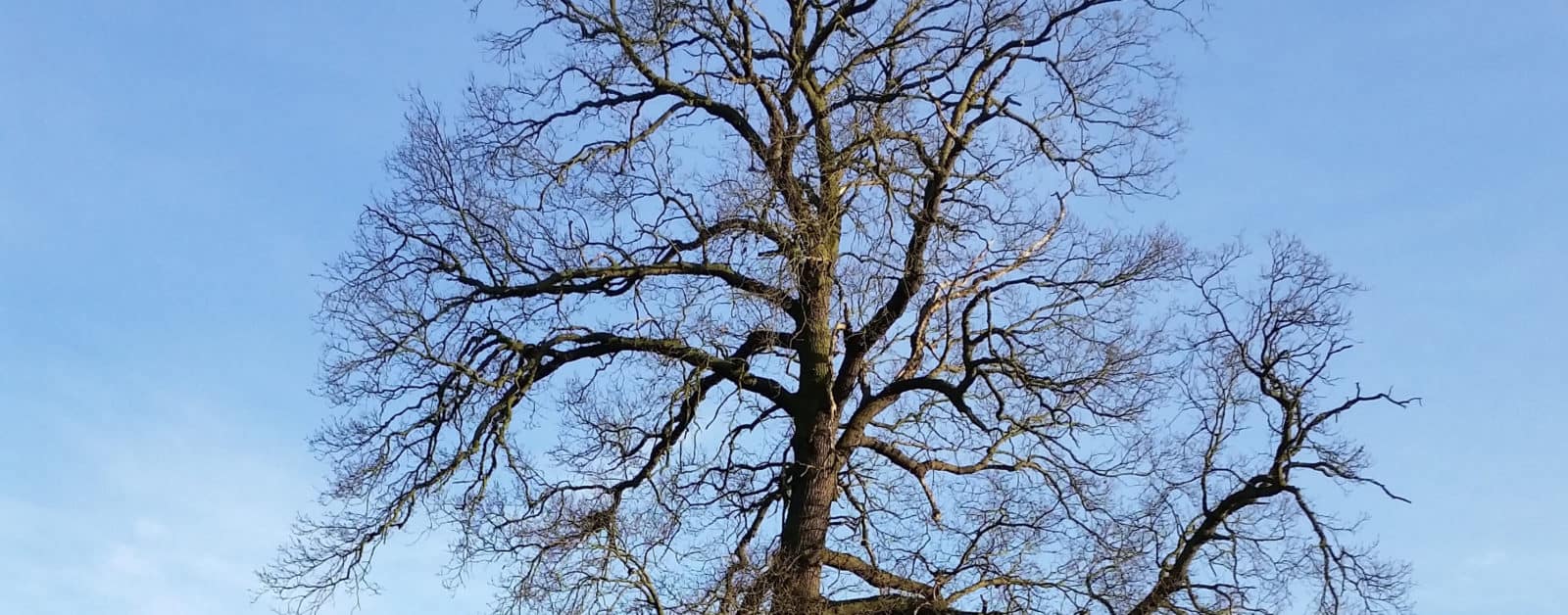Steve Docker is a Resource Development Officer with Field Studies Council Publications. Here he takes a little time off and invites you to join him as he finds gold on a local winter walk in Derbyshire.
As we made our way back to our car we reflected upon a wonderful ‘champagne day’. Full of learning opportunities and surprises. Several hours earlier and equipped with binoculars, telescope, sandwiches, and a flask of hot tomato soup my wife and I had set off for a winter nature walk along the northern edge of our local reservoir. We had no expectations or plans.
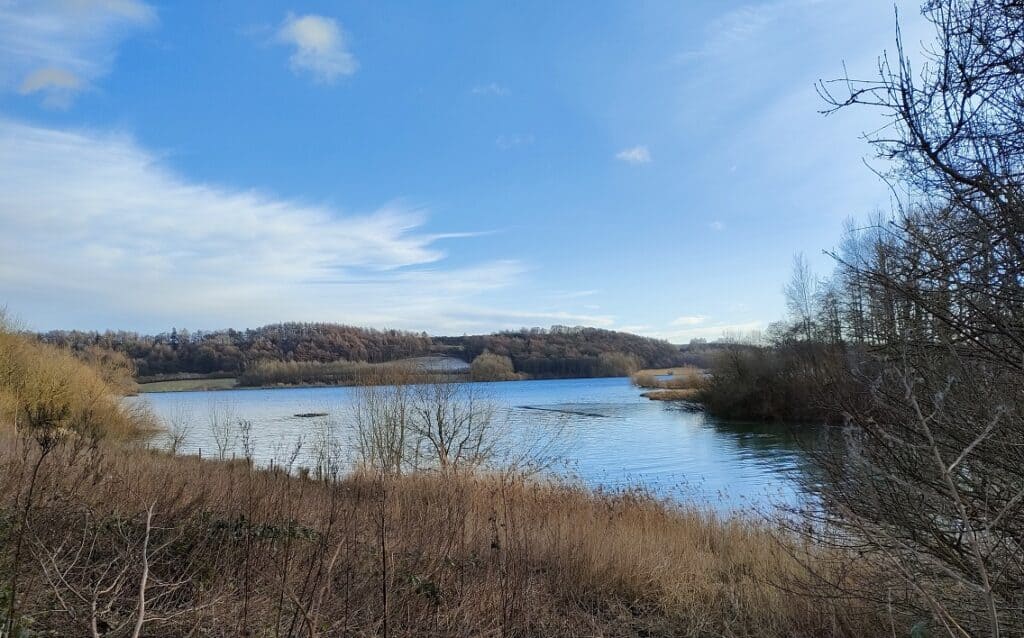
We started by a bird hide which had an adjacent bird table. As we arrived, a pair of Blue tits were energetically chasing each other around the nearby shrubs. We stood for a while and watched as a variety of small birds (passerines) visited the feeder. Then something different arrived on a branch next to the bird table. Somewhat thick-necked it had white cheeks (ear-coverts) and a black cap.
Now then, was it a Marsh tit or a Willow tit? The debate began and out came the bird guide as these two species look very similar to each other. The bird made no sounds to give us a clue. Marsh tits have an explosive, sneezy ‘pitch-u’ call whereas Willow tits make a nasal ‘chay, chay’ buzzing sound. The bird hopped onto the feeder for a moment and then it was off – not much time for an accurate identification! On the basis that it was at a bird table in winter we thought that it was more likely to be a Marsh tit, but we couldn’t be certain.
Striking gold!
As we rounded a bend in the path our eyes were drawn to movement, low down in front of the vegetation. A tiny brown bird, constantly on the move and a blur of rapid wing beats.
When we managed to get a view with our binoculars it turned out to be a furtive Goldcrest, with a cute, quizzical look. Although it didn’t remain still for long, we were treated to several minutes of excellent views of its stunning yellow-orange crown stripe. Goldcrests are usually found high in the tree canopy restlessly moving between branches so it was wonderful to get such close-up views of this confiding male. We had found gold!
Wildfowl and more gold
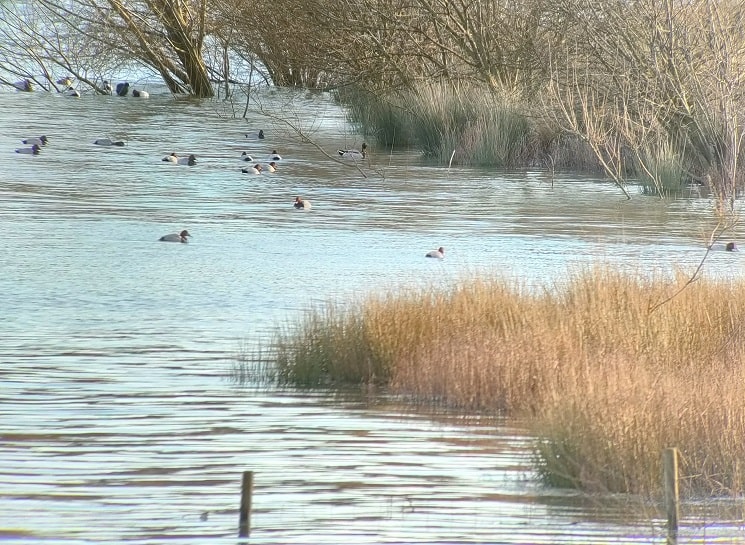
Our ears and eyes alerted us to wildfowl on both the open water and at the sheltered edges of the reservoir, which had a thin sheet of ice covering the shallows. We rested against a five-bar gate to view good numbers of both dabbling and diving ducks.
The surface feeding dabbling ducks included Gadwall, with their small white speculum and finely vermiculated plumage, Mallard, Teal and Wigeon.
The diving ducks, with their gradually sloping stern, included Pochard, Tufted duck and more gold, a pair of Goldeneye on the open water. I was glad that I had brought the telescope as this afforded us spectacular views, especially of the male. The distinctive head shape and of course the yellow eyes. The gleaming white of the rounded loral spot, breast, and flanks. The narrow black scapular lines hanging down the white flanks. The male began a tentative courtship display, tossing his head rearward on to his back – an early sign of spring perhaps? Despite his fine plumage and ‘neck-stretching’ display the female showed no interest and swam away!
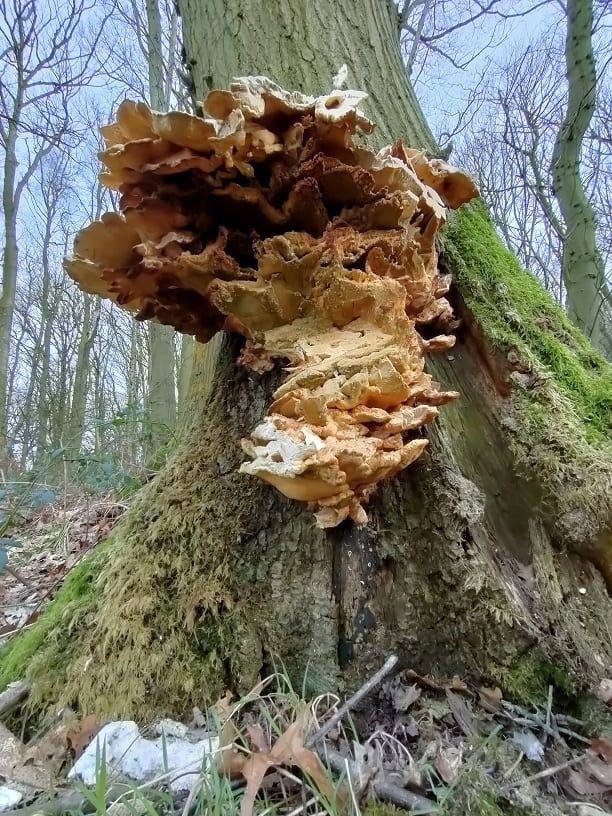
Golden brackets
As we approached the furthest point in our walk a large group of Long-tailed tits were moving through the shrubs at the edge of the water – and then yet more gold! A series of undulating, suede-like, yellow-orange brackets arranged in tiers at the base of a tree. We checked our WildID guide (distinctive non-gilled fungi) and sure enough, it was a huge Chicken of the Woods Laetiporus sulphureus bracket fungus. Past its best at this time of year but impressive all the same. We have booked a return visit in the summer to see if we can find a fresh specimen.
Unusual sounds
As we retraced our steps we were greeted with an unusual soundscape, one that was new to us. There was now a slight breeze which was producing gentle waves on the water surface. Where the waves met the thin sheet of ice covering the shallow water the ice was cracking under the wave action. We could hear breaking ice. We paused and listened for a while. Then, as the light began to fade, we took one last look and headed home.
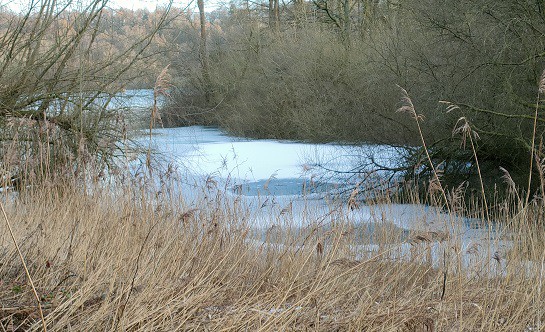
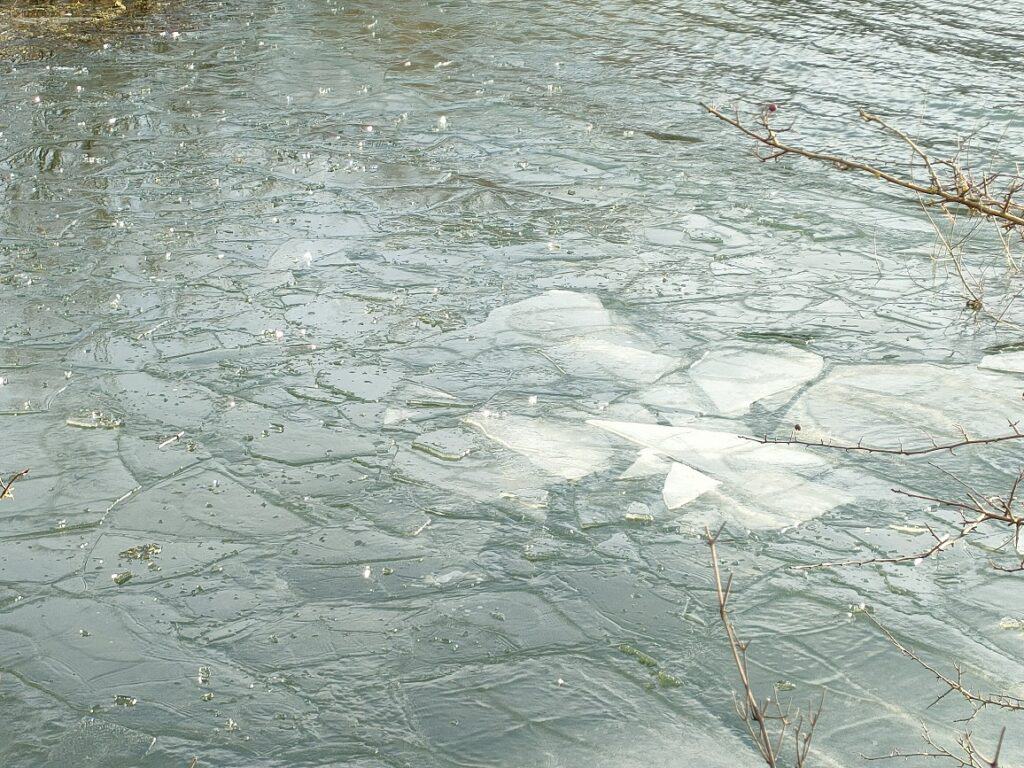
So, if you have some free time and fancy something different, why not put on your boots, grab some WildID guides, and see if you can find gold.
Want to learn more?
To help us all appreciate and enjoy biodiversity and better understand the changing state of nature the Field Studies Council has produced a wide range of high quality identification resources. In particular the WildID fold-out guides and Aids to Identification in Difficult Groups of Animals & Plants (AIDGAP). The WildID Distinctive Fungi guides (OP213 & OP214) are available from our online shop.
Interested in woodlice, ladybirds, centipedes, water beetles or more? Our Atlas range (in association with Biological Records Centre) is now on sale. 20% or more off for orders before 31 March 2024.

